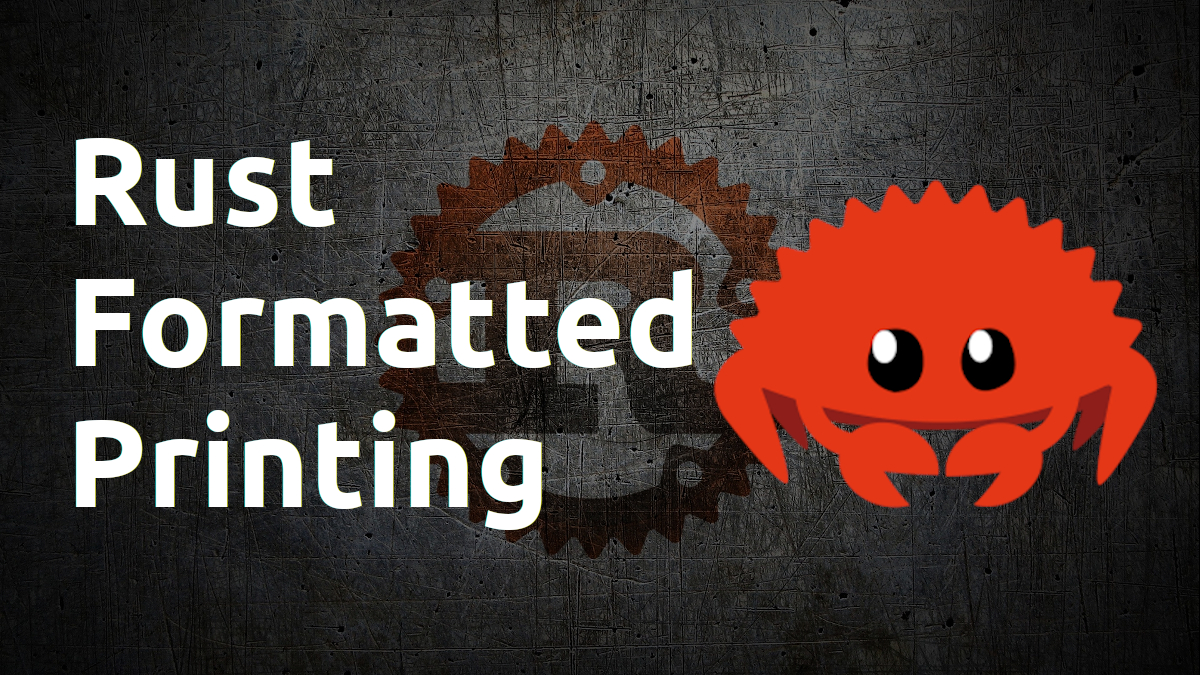Formatted Print in Rust with Examples
Share on:Edit on:Table of Contents
Introduction
Print statements are very common in programming. Either these are used to prompt user for information or to debug the program or to save the program logs for troubleshooting later.
In Rust programming language, printing is handled by bunch of macros listed below. Macros in Rust end with exclamatory mark (!).

print!
print! is a macro that prints formatted text to the console (or stdout). This macro receives multiple arguments. The first argument is the literal string. The curly braces {} in the first argument will be replaced by the their referencing values and then the resulting formatted string is printed to a console.
Here are few examples.
Example 1
fn main() {
print!("Hello World {}!\n", 2); // \n is the new line character.
}
In above example, the curly braces will be replaced by 2 and the resulting formatted string is sent to console.
Run the program using the following command.
cargo run
The output -
Hello World 2!
Example 2
fn main() {
print!("Hello {}, Numbers -> {}, {}, {}\n", "World!", 3, 2, 0.5);
}
The output -
Hello World!, Numbers -> 3, 2, 0.5
The first {} is replaced with World!, the second {} is replaced with 3, the third {} is replaced with 2 and so on…
Example 3
fn main() {
print!("Hello {0}, Numbers -> {2}, {3}, {1}\n", "World!", 3, 2, 0.5);
}
The output -
Hello World!, Numbers -> 2, 0.5, 3
In the above example, {0} always points to “World!”, {1} always points to 3, {2} always points to 2 and {3} points to 0.5
Example 4
fn main() {
print!("The binary equivalent of {} is {:b}\n", 20, 20);
}
The output -
The binary equivalent of 20 is 10100
Example 5
fn main() {
print!("The coordinates -> ({x},{y},{z})\n", z=3, y=2, x=1);
}
The output -
The coordinates -> (1,2,3)
Example 6
fn main() {
print!("This is padding {num} with {digit} spaces -> \
{num:>digit$}\n\
And this is padding {num} with {digit} 1s -> {num:1>digit$}\n",
num = 5, digit = 6);
}
The output -
This is padding 5 with 6 spaces -> 5
And this is padding 5 with 6 1s -> 111115
println!
The println! macro is same as print! except that the former adds the new line \n automatically at the end of the string.
fn main() {
let v = [1, 4, 5, 8];
println!("{:#?}", v); // Pretty print
}
The output -
[
1,
4,
5,
8,
]
format!
fn main() {
let new_string= format!("Hello World {:.1}!", 2.0);
println!("{}", new_string);
}
The format! macro writes the formal string to a string variable.
The output -
Hello World 2.0!
eprint!
The eprint! is same as print!, except the output is sent to standard error (by default console for both stdout and stderr). eprint! is used to report error messages.
eprintln!
The eprintln! macro is same as eprint! macro, except it adds the new line at the end of string.